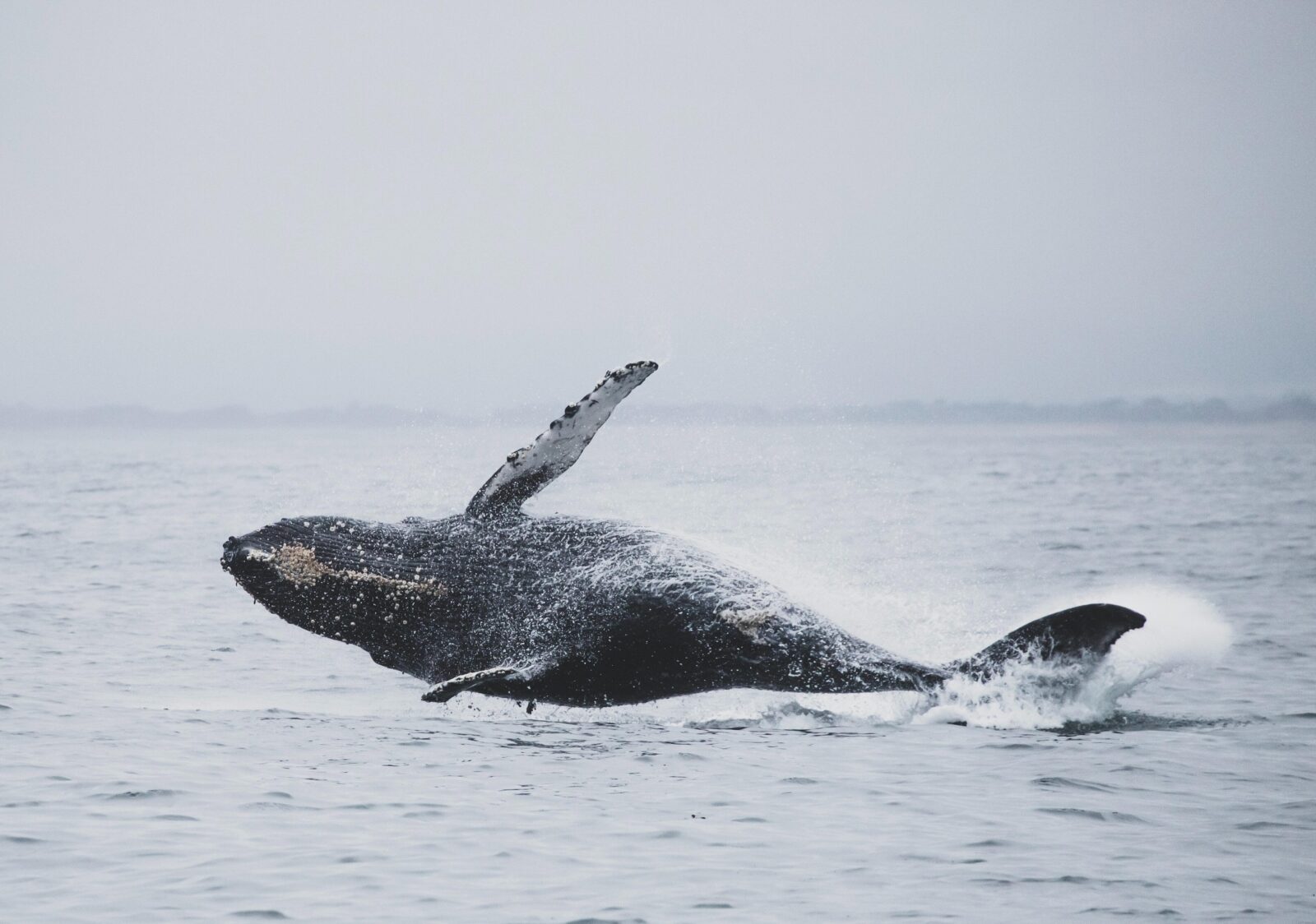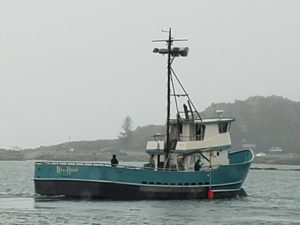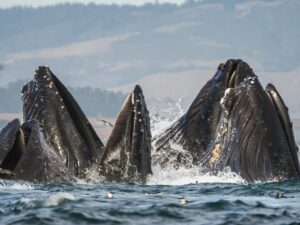Commercial crabbers south of Point Arena with crab pots in the water pulled them out this past weekend, as the California Department of Fish and Wildlife shut down the crab fishery early—for the fifth straight year—to prevent humpback whale entanglements. Crabbers lost more than two months of the season with the closure, but recent surveys reported about 30 of these protected whales near Morro Bay and dozens more in both Monterey and Half Moon Bay.
As Whale Populations Grow, Dungeness Crabbers Foresee Their Own Demise
In Bay Nature’s spring 2023 issue, Anne Marshall-Chalmers reports on what’s behind the growing conflict between humpback whales and California’s largest fishery.
Free webinar: Coexistence? Humpback Whales and Dungeness Crabbers
Join us online for a Bay Nature Talk on Wednesday, April 26, 4-5 pm. Humpback whale scientist John Calambokidis, commercial fisherman Dick Ogg, and science journalist Anne Marshall-Chalmers will discuss the challenges and paths forward.
Two factors have increased the potential for Dungeness crabbers’ gear to entangle California’s humpbacks, as Bay Nature reported recently. First, humpback whale populations have rebounded from near extinction. Second, after the 2014-2016 marine heat wave known as the Blob, more whales headed into areas used by crabbers. Whale entanglements on the West Coast quadrupled post-Blob, and the state implemented a risk assessment management program (RAMP) that aims to keep commercial crab gear out of the water when whales are present.
Sometimes, entangled whales can free themselves. But if not, they may drag gear for hundreds of miles, causing them to grow weak and starve; sometimes the gear severs body parts, killing them.
Bob Maharry, a veteran San Francisco crabber, expected the early closure. Whales typically start migrating from their tropical and subtropical breeding grounds into California waters to feed come spring. “Some guys are bitter, but we’ve got to be realistic. The whales are coming. We’ve got to be glad we came away clean,” he says. The crabbing season ended April 15 without a single reported entanglement.

Last year, there were four entanglements involving California commercial Dungeness crab gear, and six others in which commercial crab gear was likely the cause. Three of the four confirmed entanglements happened one after the other in March 2022. “We’re in precautionary mode,” says Ryan Bartling, an environmental scientist with CDFW. “We do not want to have the same situation that happened last year.”
The early closure is tough, particularly since many crabbers would normally pivot to salmon fishing in the spring and can’t do so this year. A council of West Coast fishery managers canceled this year’s salmon season due to nearly record-low forecasts of returning Chinook populations. Maharry, and another veteran crabber, Dick Ogg, say they can weather the double whammy of an early crab fishery closure and salmon fishery cancellation, but younger fishermen and deckhands are struggling.
“I just talked to one of my crew members, and he’s down to his last dollar,” says Ogg, who adds the shortened crab season was a challenge from the start.
In late December, after weeks of delays due to lingering humpbacks off the California coast, most of the state’s commercial crabbers finally got the green light to set some of their traps. Just as crabbers were going to retrieve their first haul—which is usually the most bountiful—the atmospheric rivers came. As rains drenched northern California, 25-foot ocean swells offshore flipped over many crab pots, allowing the trap doors to open and crabs to escape. Some pots hopscotched away from where they were set during the storms. Ogg says the rough seas buried some of his gear in two feet of mud.
When the weather finally cleared, buyers offered dramatically lower prices, about $2 less per pound than the $5 per pound crabbers received last year. “We haven’t fished for under three dollars (per pound) in years,” says Ogg. The dismal price only put more pressure on crabbers to retrieve as much crab as possible in a shortened time.
While Ogg would have liked to fish a little longer into the spring, he supports CDFW’s decision to close the fishery. Under RAMP, the state tracks entanglements, and the state aims to keep a rolling average of no more than two entangled humpbacks over three years. Right now, the past two fishing seasons have left the fishery above that entanglement average.
In an odd turn of events, an entanglement credited to the 2021-2022 fishing season was just recently discovered. A February online article showcasing pictures from an underwater photography competition included a photo of a starving entangled humpback off the coast of Mexico. CDFW’s Bartling says tags on the whale confirmed the gear belonged to the commercial California crab fishery, and scientists were able to determine the entanglement had not yet been reported using unique markings on the whale’s fluke. (It’s believed only 10 percent of whale entanglements are ever located and documented.)
To end entanglements, many conservation groups believe the crab fishery must switch to ropeless gear, which unspools rope automatically as needed. But many fishermen feel adamantly that the gear cost must come down and more research must prove the technology is efficient and successful. “Right now we can’t afford it, and the verdict is still out (if it works) in the depths we fish,” says Maharry.
No matter the gear, each humpback entanglement is a violation of both the Endangered Species Act and the Marine Mammal Protection Act. California is in the process of applying for a federal permit that will allow some entanglements of humpbacks as long as the state can prove it has a robust conservation plan in place to protect the species. Ogg believes the early closure this year will help signal to the federal government that the crab fishery is being managed well.
Still, the humpback population is increasing by about 7 to 8 percent every year. And Ogg believes that shortened seasons, a limit on gear in the water and other measures will likely shape the future of California crabbing.
“As the population gets bigger and bigger and bigger, the likelihood of interaction increases significantly,” he says. “We’ve got to be cognizant of where the animals are and how to limit interaction.”



.jpg)
-300x163.jpg)